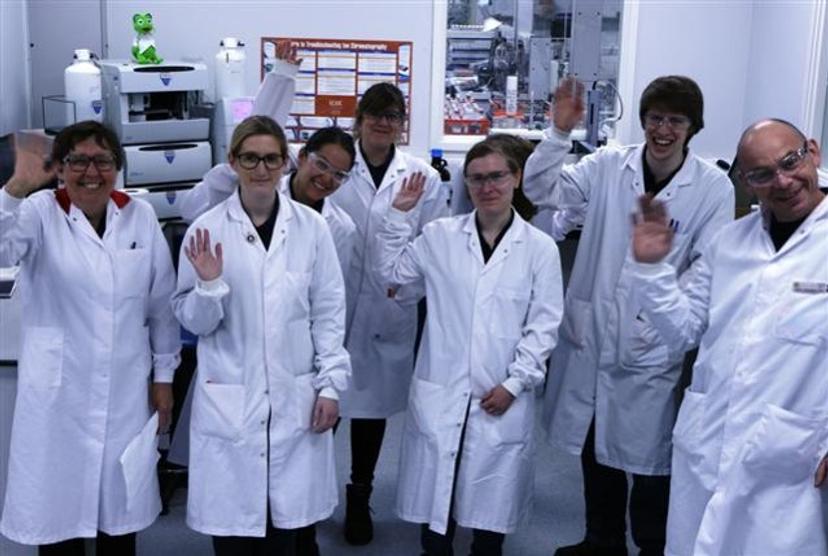Drinking Water Analysis using Ion Chromatography at Anglian
Chris Pegg, Senior Scientist Chemistry at Anglian Water, UK, explains why his team uses ion chromatography to monitor target ions in drinking water
25 Aug 2016
The Anglian Water Analysts - Image courtesy of Chris Pegg

Anglian Water supplies water and water recycling services to more than six million domestic and business customers in the east of England and Hartlepool.
SelectScience® spoke to Chris Pegg, Senior Scientist Chemistry at Anglian Water to learn how his team uses ion chromatography to perform effective analysis of disinfection by-products in water.
What analytes are monitored in the water?
At Anglian Water, Chris's team is monitoring disinfection by-products, in particular bromate, chlorate and iodide. “These are dealt with by Regulation 26 of the Water Supply – known as the disinfection by-products rule” says Chris, “It obliges water companies to design, operate and maintain disinfection processes to keep by-products as low as possible, while not compromising effectiveness of disinfection. We do this by producing a risk assessment. You populate it with your water quality results and what treatment you’ve got on site and it gives a level of risk. It allows others on site to be aware of what’s going on”.
Why use Ion Chromatography (IC) for water analysis?
Chris explained; “Since the late 90s we’ve used IC to test for bromate and chlorate. Previously, we used liquid chromatography (LC), but we had problems with certain samples”.
The lab at Anglian Water currently uses the Dionex™ ICS-5000+ Reagent-Free™ HPIC™ system and the ICS-2100 Integrated Reagent-Free IC System, both from Thermo Fisher Scientific. Chris explained, “we’re currently on our third or fourth IC system, and a big reason is performance”.
According to Chris, “IC fits nicely into our operation - we can run bromate and chlorate effectively on the same run". However, when analyzing iodide, "we replace the column, so we have a day dedicated to iodide analysis. Due to long stability of the samples it doesn’t affect our operation. Time per sample isn’t an issue, with little downtime, as it is left to run over night. In the morning, peaks are quantified and downloaded to Laboratory Information Management System (LIMS) for the business to use, so the analyst can do other things during the day. Also, because it’s so easy to use, it’s very easy to train on - we can fully train an analyst in 3-4 months”.
Chris added, “Servicing is only required once a year, which takes all day. With maintenance, it doesn’t need stripping down, although we change piston seals about every 6 months as we find it runs a bit better”.
The future of IC in the water analysis lab
According to Chris, “if we bolt a mass spec onto our IC, we can analyze down to parts per trillion, but it’s working fine for now”. “Our next IC project is chromium-6 in drinking water,” revealed Chris, “which is something I’m quite excited about”.
